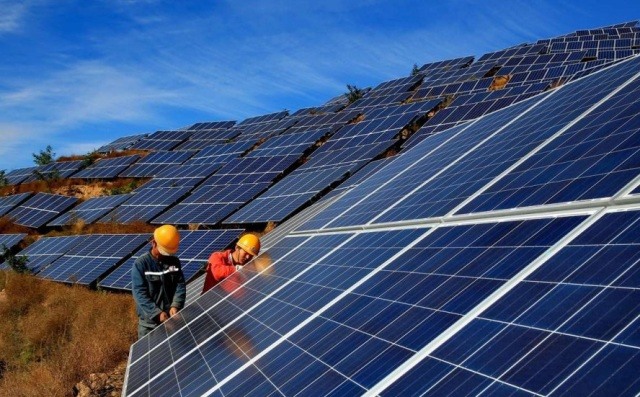
Crude oil, coal, gas, hydropower and renewable energy are domestically exploited energy sources, of which coal has played the main role in the country’s energy sector. — Photo baodautu.vn
Ly Ly Cao
HÀ NỘI — Energy import independent countries like Việt Nam will be badly hurt by soaring prices of coal and crude oil in the international market. Therefore, in reaching net-zero emission by 2050, the reliance on fuel imports in the country will greatly reduce, according to the 2021 Việt Nam Energy Outlook report released on Thursday.
The growing demand for fossil fuels for power plants has turned Việt Nam, which used to be a net-energy exporter, into a net importer of energy since 2015 and changed the fuel mix in the total primary energy supply.
Crude oil, coal, gas, hydropower and renewable energy are domestically exploited energy sources, of which coal has played the main role in the country’s energy sector.
In 2019, the net import of oil corresponded to 30 per cent of Vietnamese oil consumption, while about 50 per cent of coal used in Việt Nam originates from abroad, the report said.
The report showed that costs of fossil fuels account for 37 per cent of the total system costs in 2020.
The participation of solar and wind power in the energy system since 2019 has provided an opportunity to reduce fuel imports to the power sector amid soaring fuel prices, due to geographical tensions and higher demand during the global economic recovery post-pandemic.
Even though solar and wind power depends on factors such as wind speed, solar insolation and rainfall, these risks can be mitigated through effective planning of the energy system.
As Việt Nam pledged to reach net-zero greenhouse gas emissions by 2050, diversification in energy sources will help the country achieve this target. In the net-zero scenario, the country will be almost self-sufficient in energy supply by 2050, said the report.
Introduction of offshore wind
The long coastline of Việt Nam naturally provides huge potential for offshore wind.
“We are noting that Việt Nam is sitting on some of Asia’s best offshore wind resources. In our study back in 2020, we established a total technical potential for offshore wind of 160GW,” Erik Kjær, Chief Advisor of Danish Energy Agency, said at the meeting.
This will be quite different from existing near-shore and intertidal wind energy projects, which sometimes are referred to as offshore wind energy projects in Việt Nam.
Indeed, the new offshore wind industry will distinguish itself by both distance from shore, scale and technology.
Driven by larger and more efficient wind turbines, lower capital and operating costs, and other technology advancements, the price of electricity generated by offshore wind energy has come down globally, which is vital and a great incentive for the rapid growth of the industry.
However, as offshore wind is a complex and large-scale technology, and often a risky project requiring large investments with a comprehensive supply chain and engagement of multiple authorities, it takes many years to deploy an offshore wind farm in experienced offshore wind countries and even longer in countries with limited or no experience.
“According to Danish experience, it could easily take seven years or more before you are able to transition a large project”, Kjær said, adding that Denmark will continue to support Việt Nam in implementing offshore wind projects.
Denmark has been a pioneer and a world leader in offshore wind energy since 1991, when it commissioned the world’s first offshore wind energy farm.
Now, Denmark is taking a lead on reducing the costs of offshore wind power. An auction for a 1,000 MWoffshore wind energy project completed by the end of 2021 set a new record and demonstrated the competitiveness of the technology, with conducive regulatory framework conditions.
The 2021 Việt Nam Energy Outlook report, which was developed in close cooperation between the Danish Energy Agency (DEA), the Electricity and Renewable Energy Authority (Việt Nam), and the Embassy of Denmark, was presented in Hà Nội.
The report proposed five main scenarios, which are baseline, green power, green transport, air pollution and pathway to net-zero scenarios.
It is expected that the report will give concrete inputs to the implementation of Việt Nam’s National Power Development Plan No 8 (PDP8), the National Energy Master Plan, the Vietnamese Climate Change Strategy and other governmental plans and strategies. — VNS
- Reduce Hair Loss with PURA D’OR Gold Label Shampoo
- Castor Oil Has Made a “Huge” Difference With Hair and Brow Growth
- Excessive hair loss in men: Signs of illness that cannot be subjective
- Dịch Vụ SEO Website ở Los Angeles, CA: đưa trang web doanh nghiệp bạn lên top Google
- Nails Salon Sierra Madre
 VnExpress News The News Gateway of Vietnam
VnExpress News The News Gateway of Vietnam




